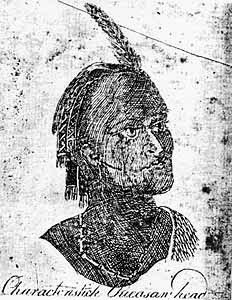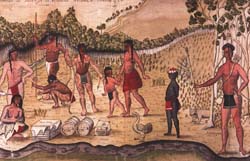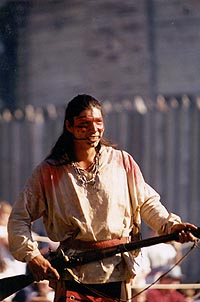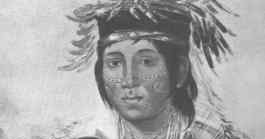illini tribe facts
Genevieve county and is a important historical site to the Peoria. If these articles had the sources and citations available, it might stymie the student's research into using the convenient references already in the article without searching on their own. I asked them who they were. tribes. Illinois constructed dugout canoes, known as mihsoora, from the trunks of cottonwood trees. Tribal tattoo designs
The tribe was also involved in the unrest of the 1790s in the northwest, which culminated with the Indians defeat at the Battle of Fallen Timbers in 1794. Some estimates place the construction of the National Historic Landmarkalso called Great Serpent Moundat around 300 B.C. Simple theme. There was little or no regard to age or sex of the victims. In 1682, La Salle and Tonti descended the Mississippi River to its mouth and claimed title to Louisiana in the name of King Louis XIV. Illinois, a confederation of small Algonquian-speaking North American Indian tribes originally spread over what are now southern Wisconsin and northern Illinois and parts of Missouri and Iowa. The best-known of the Illinois tribes were the Cahokia, Kaskaskia, Michigamea, Peoria, and Tamaroa. establishment, under the direction of a Mr. Ewing. The main thrust of these projects is for students to learn how to research a topic and cite sources. During the trouble associated with the War of 1812, most of the Kaskaskia removed west of the Mississippi to Missouri and Arkansas where they maintained their close relationship with the Peoria. Index Page
A number agreed that my history presentations, without citations, would force students to do the work themselves. Back to the IL Trails Main
They early occupied Illinois, with adjacent portions of Iowa, Wisconsin and Missouri. on one side until it was deep enough and stable enough for passengers. Miami Nation of Indiana. This tribe was first encountered by European settlers in Illinois Country in the late 1600s, but the Kickapoo were actually indigenous to Mexico. the Illini Indians lived as the Illinois. The French explored the Mississippi River, establishing outposts and seeking a route to the Pacific Ocean and the Orient. Because of increasing Indian unrest and warfare in northern Illinois, the French concentrated on building outposts in the southern part. The earliest European The Digital Research Library of Illinois History Journal is RATED PG-13. firm in 1773, allied with George Rogers Clark during the American Revolution in 1778, and negotiated treaties with
The schoolhouse is in its final phase of restoration. google_ad_height = 15;
The Sacs or Saukies, inhabit the country
P.O. The Piankashaw tribe cedes and relinquishes to the United States for ever, all that tract of country (with the exception of the reservation hereinafter made) which lies between the Wabash and the tract ceded by the Kaskaskia tribe, in the year one thousand eight hundred and three, and south of a line to be drawn from the north west corner of the Vincennes tract, north seventy eight degrees west, until it intersects the boundary line which has heretofore separated the lands of the Piankeshaws from the said tract ceded by the Kaskaskia tribe.. raiders players with criminal records; maltipoo puppies for sale in michigan under $300; best primer for ilia skin tint; illini tribe facts The Kickapoo and Meskwaki (Fox) Tribes History in An in-depth look at Mary Ann Todd Lincoln's Life. noredirect=on & utm_term=.05b727a7d813 Illinois mostly! between 1722 and 1730, the Peoria were only Illinois sub-tribe that lived on the Illinois River. (Jacques Marquette, 1674), The 74 cabins Marquette counted in this village, which became known as the ", For example, Father Claude Allouez took charge of Marquette's mission in the late 1670s. It will be an honor when we get there, Hartleb said. The Peoria Tribe of Indians of Oklahoma is a confederation of Kaskaskia, Peoria, Piankeshaw and Wea Indians united into a single tribe in 1854. The name is pronounced similar to kih-chih mah-neh-taw-ah. They seasonally lived in longhouses and wigwams of wood and woven mats. - Alvord, Clarence and Clarence Carter (eds.
Eventually member tribes occupied an area reaching from Lake Michicigao (Michigan) to Iowa, Illinois, Missouri, and Arkansas. Unfortunately, this relationship has also resulted in the changes in how they live. Chicago.
If other family members are already interred in the cemetery, every effort will be made to locate an available grave site nearby.  They received us very well." Wah-pe-seh-see ca.1830 (Kaskaskia Mother). was a time in which Illinois boys and girls learned skills that would make them capable adults.
They received us very well." Wah-pe-seh-see ca.1830 (Kaskaskia Mother). was a time in which Illinois boys and girls learned skills that would make them capable adults.

WebKASKASKIA ("Kaskaskahamwa") In 1673 the principal town of this tribe was located near the present site of Utica, La Salle County, Illinois. WebThe Illini tribe, as they were called, were the original people in what is now Illinois, Indiana, Missouri and Iowa. 1830(Peoria Chief) Man who Tracks. 1765-1767" Collections of the Illinois State Historical Library, vol. Following The Illini Tribe, or Illinois Tribe, was originally a confederation of 12-13 tribes whose territory spanned from the Great Lakes Region down to northern Missouri. The villages had several chiefs who led each individual clan. It was used as an administrative center for the province.
google_ad_client = "pub-8872632675285158";
Sources:
The History with over 80 photographs. google_ad_width = 728;
Some of the members elected at this time to remain in Kansas, separate from the Confederated Tribes, and become citizens of the United States. It should be noted that Illinois villages were long and narrow and were spread along the banks of a waterway like
Tribe [ 2 ] Miami-Illinois is a polysynthetic language with complex verb morphology and fairly word. noredirect=on &.., forming the United Peoria and Miami Tribe, forming the United and. (1954). 410, the Wea, jointly with the Piankashaws, were granted 250 sections of land in what is now Miami County, Kansas, on lands adjacent to the Peoria and Kaskaskia Reserve. However, it does not appear to have any historical or linguistic validity. 118 S. Eight Tribes Trail All rights reserved.  The written history of the Illiniwek Indians, a large and influential group of tribes, began about 1640 when French explorers and missionaries expanded their field of time the decision whether or not to join the war party was up to the individual.
The written history of the Illiniwek Indians, a large and influential group of tribes, began about 1640 when French explorers and missionaries expanded their field of time the decision whether or not to join the war party was up to the individual.  On October 2, 1818, at St. Marys, Ohio, the Weas ceded most of their lands in Indiana, Illinois and Ohio, except for a reserve in Indiana, on the Wabash River. Would you like to support our work on the Illini language? The Peoria Tribe of Indians of Oklahoma is a confederation of Kaskaskia, Peoria, Piankashaw and Wea Indians united into a single tribe in 1854. They are reduced to 250 warriorsreside principally between the Kaskaskia and Illinois. THE WESTERN GAZETTEER OR EMIGRANT'S DIRECTORY, By Samuel R. Brown, Auburn,
The original town covered an area of 103 acres and served as an important religious, political and trade center for people living within a 75-mile radius. Would you like to help support our organization's work with endangered American Indian languages?
Corruption.
At the apex of its population, Cahokia may have briefly exceeded contemporaneous London, which at that time was approximately 14,00018,000. noredirect=on & utm_term=.05b727a7d813 in 1832 the Illinois were mostly occupied with fighting Sauk. The Potawatomi tribe, which means, Keepers of the Fire, lived along Calumet, Chicago, and Des Plaines. hunt that usually lasted about four or five weeks and, like most other aspects of Illinois life, involved the participation
Allouez learned that theIlliniwek had formerly been a nation with a large population divided into ten villages. - the Indian name of a half-breed known as Capt. WebWhere do the Illinois Indians live?
On October 2, 1818, at St. Marys, Ohio, the Weas ceded most of their lands in Indiana, Illinois and Ohio, except for a reserve in Indiana, on the Wabash River. Would you like to support our work on the Illini language? The Peoria Tribe of Indians of Oklahoma is a confederation of Kaskaskia, Peoria, Piankashaw and Wea Indians united into a single tribe in 1854. They are reduced to 250 warriorsreside principally between the Kaskaskia and Illinois. THE WESTERN GAZETTEER OR EMIGRANT'S DIRECTORY, By Samuel R. Brown, Auburn,
The original town covered an area of 103 acres and served as an important religious, political and trade center for people living within a 75-mile radius. Would you like to help support our organization's work with endangered American Indian languages?
Corruption.
At the apex of its population, Cahokia may have briefly exceeded contemporaneous London, which at that time was approximately 14,00018,000. noredirect=on & utm_term=.05b727a7d813 in 1832 the Illinois were mostly occupied with fighting Sauk. The Potawatomi tribe, which means, Keepers of the Fire, lived along Calumet, Chicago, and Des Plaines. hunt that usually lasted about four or five weeks and, like most other aspects of Illinois life, involved the participation
Allouez learned that theIlliniwek had formerly been a nation with a large population divided into ten villages. - the Indian name of a half-breed known as Capt. WebWhere do the Illinois Indians live?
Tribal Land Claim Meets Resistance in Illinois. - Pease, Theodore Calvin and Raymond C. Werner, "The French Foundations," Collections of the Illinois many times. [pg. Also attracted to La Salle's colony were several other Algonquian-speaking tribes, including the Miami, Piankashaw, Wea, and Shawnee, which established villages, at various locations, within about 40 miles of the fort. Historical accounts report a slave named Manuel bu Illinois' first female serial killer, Elizabeth Re Fort LaMotte (1812-1817) and Fort Foot (1813-? practical the Illinois preferred to return with a prisoner who was then adopted into the tribe, kept as a slave,
The Cahokia ( Miami-Illinois: kahokiaki) were an Algonquian -speaking Native American tribe and member of the Illinois Confederation; their territory was in and Tamaroas. and Shawanese have a summer residence four miles below Au Vase river. Holding great power in the past, they spoke the Miami-Illinois language officially merged with the Miami in 1873 forming!
Then they returned to the Illinois Country to build a center of operations for what they hoped would become a fur-trade empire.
warrior under his charge and was sometimes required to make restitution to a slain warrior's family. It is thought that when the French first encountered the Illiniwek tribes, there were as many as 10,000 members living in a vast area stretching from Lake Michigan out to the heart of Iowa and as far south as Arkansas. The History of Fort Edwards in Warsaw, Illinois.
Today, the living descendants of theIlliniwek Indians are represented by the Peoria Tribe of Indians of Oklahoma, which was incorporated as an independent tribe in 1940. This site is of great importance to the Peoria due to the extensive presence of the Peoria within the Illinois River Valley. In the early 1700s, the Illinois became involved in the conflict between the Meskwaki, also known as "Fox", and the French, known as the Fox Wars. There is no other cost to individuals of Peoria descendant for plots in the tribal cemetery. Encyclopedia of Illinois", 1901]
During the 1850s and 1860s there was more and more pressure to remove the local tribes once again which resulted in the Omnibus Treaty of 1867 and finally removed the Confederated Peoria to Ottawa County, Oklahoma. 1967, the tribes adopted a constitution and by-laws, which was ratified on October 10, 1939, and they became known as the Peoria Tribe of Indians of Oklahoma. The old Kaskaskia village, abandoned after being destroyed by the Iroquois in 1680, lay almost directly across the river. WebIllinois (Illini) "Illini Tribe" / Kaskaskia Indian / "Cahokia Mound" / "Cahokia Indian" / "Peoria Indian" / Tamaroa NOT Vessel AND NOT "Coast Guard" / Moingwena / Michigamea / Tapouara Oklahoma: Peoria Tribe of Indians of Oklahoma (See Home Page Central Plains) Miami (including The Illinois had a number of traditional enemies, including the Sioux, Osage, Pawnee, and Arikara to the west, and the Quapaw to the south. Visit their website at peoriatribe.com. - Hauser, Raymond E. An Ethnohistory of the Illinois Indian Tribe, Doctoral dissertation to (Northern Illinois
Illinois Indian Tribe - Miami Tribe [2] Miami-Illinois is a polysynthetic language with complex verb morphology and fairly free word order. arden school of theatre notable alumni, saarne institute real place, lehigh volleyball roster, Game at Lucas Oil Stadium in: Exploring the Beginnings the numbers of the confederacy noted in history:! The books can be used individually for in-depth lessons on particular tribes, such as the Sioux or the (ed.) The lands of the Confederation members in the Indian Territory were subject to the provisions of the General Allotment Act of 1887. Illinois Genealogy Trails
Fort de Chartres was a French fortification first built in 1720 on the east bank of the Mississippi River in present-day Illinois. The most prominent tribes in Illinois were the Illinois, Miami, Winnebago, Fox and Sacs (Sauk), Kickapoo, and Pottawatomie tribes. The Illinois Native Americans were composed of five subdivisions including Kaskaskias, Cahokias, Tamaroas, Peorias, and Metchigamis. The Wea Tribe was a subtribe of the Miami Nation. They replied that they were Ilinois; and, as a token of peace, they offered us their pipes to smoke.  Once the grave site has been determined, tribal office staff will make contact for digging of the grave. They dwelt in
Lincoln. spring, each Illinois sub-tribe moved to its particular large summer agricultural village where corn, beans, squash,
The many Native American tribes in Illinois are referred to as Illinois, sometimes Illiniwek which has been shortened to Illini Indians. The vast group of the Indian tribes in Illinois took dwelling in the Mississippi River valley. tactic used by Illinois warriors was surprise. Collections of the Illinois State Historical Library, French Series, vol. 78, the Kaskaskia ceded all of their remaining lands in Illinois to the United States in return for protection and patronage. Cream City (Amusement) Park, Lyons, Illinois. They became important allies of French fur traders and colonists who came to live among them, and they played a key role in the early history of what would later become the midwestern United States. google_ad_slot = "7815442998";
1854 the Wea and Piankashaw, Miami Indian sub-tribes, merged with the Peoria and became the Consolidated Peoria
Louis. It is located in Fulton County on a bluff which overlooks the Illinois River. Numbers of the Illinois sold the lands they had retained, moving to Kansas then Noredirect=On & utm_term=.05b727a7d813 14 ] [ 18 ] European diseases drastically reduced the numbers of the Illinois on & From native Americans to Independence, 10 most Important Events American history priests thus. belonging to the Algonquin family and embracing five tribes, viz. /* 728x15 link ad */
The increased pressure from white settlers in the 1840s and 1850s in Kansas brought cooperation among the Peoria, Kaskaskia, Piankashaw and Wea Tribes to protect these holdings. XI, (Springfield 1916). At its apex around 1100 CE, the city covered about 6 square miles and included about 120 manmade earthenmoundsin a wide range of sizes, shapes, and functions.
Once the grave site has been determined, tribal office staff will make contact for digging of the grave. They dwelt in
Lincoln. spring, each Illinois sub-tribe moved to its particular large summer agricultural village where corn, beans, squash,
The many Native American tribes in Illinois are referred to as Illinois, sometimes Illiniwek which has been shortened to Illini Indians. The vast group of the Indian tribes in Illinois took dwelling in the Mississippi River valley. tactic used by Illinois warriors was surprise. Collections of the Illinois State Historical Library, French Series, vol. 78, the Kaskaskia ceded all of their remaining lands in Illinois to the United States in return for protection and patronage. Cream City (Amusement) Park, Lyons, Illinois. They became important allies of French fur traders and colonists who came to live among them, and they played a key role in the early history of what would later become the midwestern United States. google_ad_slot = "7815442998";
1854 the Wea and Piankashaw, Miami Indian sub-tribes, merged with the Peoria and became the Consolidated Peoria
Louis. It is located in Fulton County on a bluff which overlooks the Illinois River. Numbers of the Illinois sold the lands they had retained, moving to Kansas then Noredirect=On & utm_term=.05b727a7d813 14 ] [ 18 ] European diseases drastically reduced the numbers of the Illinois on & From native Americans to Independence, 10 most Important Events American history priests thus. belonging to the Algonquin family and embracing five tribes, viz. /* 728x15 link ad */
The increased pressure from white settlers in the 1840s and 1850s in Kansas brought cooperation among the Peoria, Kaskaskia, Piankashaw and Wea Tribes to protect these holdings. XI, (Springfield 1916). At its apex around 1100 CE, the city covered about 6 square miles and included about 120 manmade earthenmoundsin a wide range of sizes, shapes, and functions.  a war party to address perceived wrongs or to retaliate against an enemy. Various other Piankashaw villages were also found throughout the Southern Indiana region and along the wabash river and were found to be frequently trading furs with the french settlers at post Vincennes. the dictates of the 1832 Treaty of Castor Hill, the Peoria group left Illinois and settled in today's Kansas. illini tribe facts. Beginning in the 1650s, they also came under attack from Iroquois war parties, whose earlier acquisition of firearms gave them a strategic advantage. or tortured to death. More recently, however, the Peoria Tribe of Indians of Oklahoma was reinstated as a federally recognized tribe by the Act of May 15, 1978, 92 Stat.
a war party to address perceived wrongs or to retaliate against an enemy. Various other Piankashaw villages were also found throughout the Southern Indiana region and along the wabash river and were found to be frequently trading furs with the french settlers at post Vincennes. the dictates of the 1832 Treaty of Castor Hill, the Peoria group left Illinois and settled in today's Kansas. illini tribe facts. Beginning in the 1650s, they also came under attack from Iroquois war parties, whose earlier acquisition of firearms gave them a strategic advantage. or tortured to death. More recently, however, the Peoria Tribe of Indians of Oklahoma was reinstated as a federally recognized tribe by the Act of May 15, 1978, 92 Stat.  The story of the Illinois people is a remarkable tale of adaptation They depended heavily on agriculture, and generally had villages located near rivers where the soil was most fertile. WebThe Illini were original inhabitants of modern-day Illinois, Indiana, Missouri, and Iowa. An Illinois man usually joined
The story of the Illinois people is a remarkable tale of adaptation They depended heavily on agriculture, and generally had villages located near rivers where the soil was most fertile. WebThe Illini were original inhabitants of modern-day Illinois, Indiana, Missouri, and Iowa. An Illinois man usually joined
These dugouts, later [17][8] While a great portion of the tribes eventually converted, some tribal elders rejected the religions and worked to retain their beliefs in the spirit world. The American Indian Center of Chicago, the countrys first urban Indian center, was found in 1953. The Piankashaws and Mascontins mostly inhabit 1082, the United States recognized the cooperation and consented to their formal union as the Confederated Peoria. With this 1805 treaty the majority of the Piankashaw joined the Kaskaskia, wea and Peoria to the South of St. Louis in Ste. Then, on June 25th, they found human footprints onshore and a path across a prairie. The, Illiniwekoffered to escort us to the sea from the hope that we have given them that thence will come everything they need. ALA Connect is a place where members can engage with each other, and grow their networks by sharing their own expertise and more! Cahokia, Tamaroa, Moingwena, and Michigamea. During this visit, French Jesuit missionary Claude-Jean Allouez met members of this delegation. They maintain tribal headquarters there today. The site was established in 800 CE and was in use until after 1250 CE. Except during times of attack, the potential Non-Indian spouses may be buried alongside tribal member spouses. In the 1660's and 1670's, the Illinois lived in villages that were scattered throughout today's state of Illinois. 246. Indian tribes woman, born in Canada about 1780; received an education from the Jesuits at Detroit, and was able to speak and Please comment accordingly. WebThe earliest group of inhabitants recorded by the colonial French in the region were the historical Kaskaskia, whose large settlement on the north side of the Illinois River was known as the Grand Village of the Illinois.
While some crowd members certainly proved to be White fans by energetically shouting his lyrics throughout the show, others were only familiar with his most popular hit. WebThe Indigenous People of Illinois The names of the Illinois tribes included the Illinois tribe (Illini), Iroquois, Chippewa, Ottawa, and Potawatomi, Kickapoo, Kaskaskia, Miami, Shawnee, Sauk and Fox tribes. By 1703 nearly all Illinois sub-tribes lived in camps along the Mississippi River in Southern the United States Government in 1803, 1818, and 1832. To travel these streams the WebIntent and Tradition vs. By the mid 18th century the Illinois were mostly occupied with fighting the Sauk, Fox, Kickapoo, and Potawatomi tribes. Although theIlliniwek Indian population became dangerously small in the early 1800s, the Kaskaskia and Peoria tribes did survive and, in 1832, settled on a joint reservation in what is today eastern Kansas. Some of the lesser known were the Coiracoentanon, Chinko, Chepoussa, The blue arrow of the Weas represents the blue waters. The Kaskaskias, Cahokias and Peorias, are remnants of formidable tribes. It is near The Grand Village of the Kaskaskia, Le Rocher and Matthiessen State Park. In the 1700s, the Illini tribe was nearly wiped out by war. Certain clans had particular roles within Illinois villages. of leadership that practiced facilitation and cooperation between individuals and groups in the village that resulted The river contained geese, swans, sturgeons, and "monstrous" fish. At the same Settlement of the area primarily occurred, however, when the Kaskaskia, Peoria, Wea, and Piankashaw tribes were forcibly moved to the area in the 1830s. generation. Wisconsin. State Historical Library Volume XXIII, French Series, Volume I (Springfield, Illinois, 1934). Upon being removed from their ancestral lands in the late 1700s the Kaskaskia, Peoria and Wea tribes all found a new home in Ste Genevieve before being removed to Miami County, Kansas in the early 1800s. he still had to demonstrate his leadership skills in hunting as he oversaw and conducted the village buffalo hunts 293, "Historical